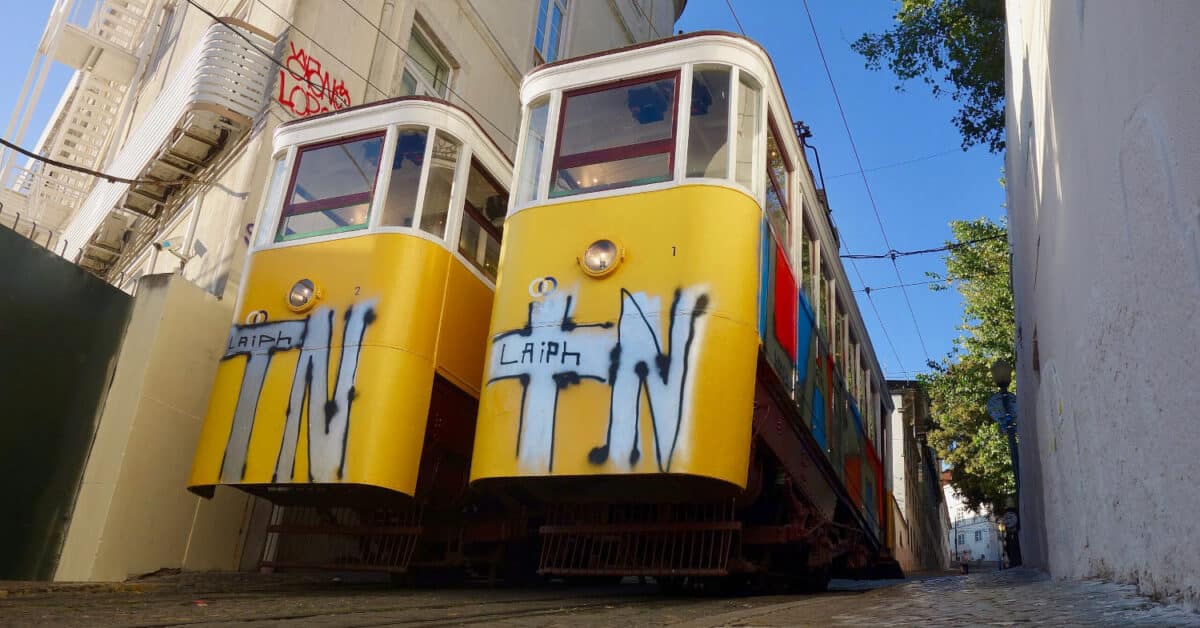The Gabinete de Prevenção e Investigação de Acidentes com Aeronaves e Ferroviários (GPIAAF) has published this Saturday, 6 September, the first conclusions on the Elevador da Glória accident, in Lisbon, which caused 17 fatalities last Wednesday.
The preliminary report confirms that the breakage of the traction cable in cab 1 caused all braking systems to fail, as they depend on the balance between the two cabs.
The incident occurred barely 50 seconds after the cable broke, when the vehicle was descending from the Bairro Alto towards Restauradores Square. During that time, the brakeman correctly activated both the pneumatic and manual brakes, but neither of them managed to stop the out-of-control car.
Trenvista Premium te lleva directo, sin anuncios que hagan descarrilar tu lectura ni tu paciencia.
Únete por sólo 35€ al año, disfruta de contenidos exclusivos, más ventajas y cancela cuando quieras.
★ Empieza ahora
The vehicle travelled 170 metres before derailing and colliding with a building at about 60 km/h, after previously hitting a catenary pole and a street lamp, impacts that would have amplified the violence of the accident.
The critical piece: the “trambolho”
The investigation indicates that the element that broke was the so-called “trambolho”. This is a cable fixing part located in each cabin.
The fracture point was inaccessible to the naked eye, which explains why the visual inspection carried out on the morning of the accident did not detect any anomalies. The cable had only been in use for 337 days, whereas its service life was set at 600, so it should have lasted at least 263 days longer.
Since the removal of the elevator’s safety rack – a toothed rail system that acted as a mechanical redundancy – in the 1920s, the pneumatic and manual brakes have ceased to be effective in the event of wire breakage. The GPIAAF stresses that this structural defect has been dragging on for a century.
Maintenance is in order, but without external control
The report also confirms that the maintenance plan was up to date. The company in charge of the overhaul that morning complied with the specifications of Carris (the operator), and there was no obligation to dismantle the “trambolho” for inspection.
Additionally, the investigating body acknowledges that, since the Instituto da Mobilidade e dos Transportes (IMT) does not have authority over the historic funicular, it is still unclear which public entity is responsible for overseeing its operation and safety.
Major inspections by an accredited body have only been found to be carried out every four years, the last one in 2022 and the next one scheduled for 2026.
Next steps in research
The GPIAAF will now work on several key fronts: the original design of the lift and the accumulated modifications; the actual efficiency of the braking systems; the quality of the cables and their fixings; the qualification of the maintenance and driving personnel; and, significantly, the legal framework regulating the Glória lift.
The cabinet plans to publish a new preliminary progress report in 45 days. The final document, which will set out the causes and security recommendations, should be ready within a year, although this could be delayed. In that case, an interim report will be issued.
GPIAAF director Nelson Oliveira insisted that the aim of the investigation is not to attribute responsibility, but to draw lessons so that an accident of this magnitude does not happen again. “Our commitment is that this tragic event will serve to improve safety and prevent future tragedies,” he concluded.
